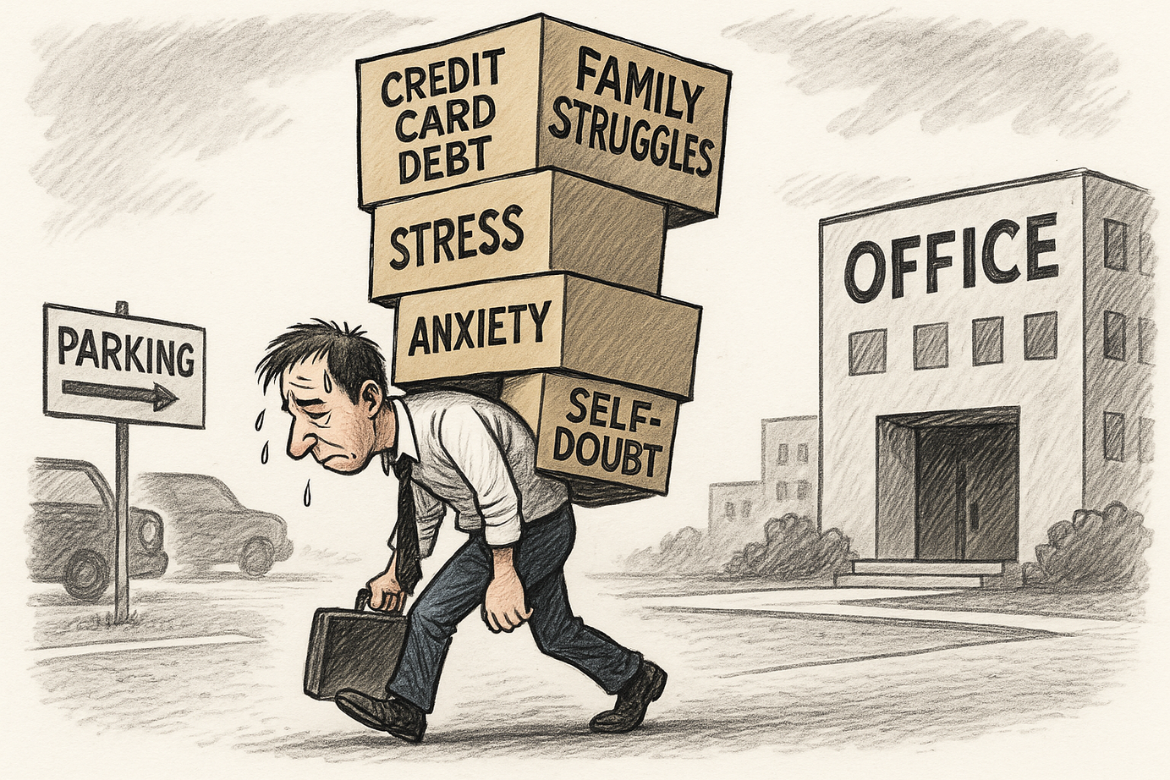As the world continues to be highly volatile, uncertain, complex and ambiguous (VUCA), the workplace is no longer insulated from the impacts and spillovers driving employees’ stress and adversity loads.
Many stressors contribute to employees’ adversity loads as they report for work. Stressors include financial stress, food insecurity and chronic stress due to family issues. Adversity loads that increase the risk of emotional struggles don’t automatically pause at the door; they often accompany employees into the workplace.
From my experience working with employees in clinical and applied work settings, the boundaries between home life and work life are often blurred and overlapping. More employees report stress, which impacts them at home and work, increasing their risk of experiencing crises.
With more employees coming to work with emotion-filled backpacks due to financial strain, caregiving responsibilities, unresolved trauma, or mental health challenges, the risk of crisis increases for people who may lose their composure and for spillover impacts on others. When an employee’s emotional backpack becomes overloaded, they tend to have lower frustration tolerance and reduced ability to regulate their emotions.
The result? Minor frustrations can trigger negative emotional reactions. For example, a minor workplace disagreement escalates into shouting. A missed deadline prompts tears. A policy reminder is misinterpreted as hostility.
These examples are becoming less rare and, in many workplaces, a new reality.
In addition to home life stresses, workplace factors can add to employees’ adversity loads. Long hours, low control, poor interpersonal dynamics and vague expectations can create psychosocial hazards—conditions that deplete psychological well-being and increase employees’ risk of mental harm, injury and illness. These hazards don’t just worsen personal stress; they create ideal conditions for it to ignite.
Emotional eruptions at work are not always the result of one explosive incident. Often, they result from an accumulation of pressure and the absence of relief. Employees may begin to act out, withdraw, lash out or violate norms. It’s not necessarily a character flaw. It’s a coping failure.
Crisis can be a symptom, not the cause
When an employee breaks down or misbehaves, it’s tempting to fixate on the outburst. However, crisis-ready leaders understand it is prudent to look beyond the situation by zooming out to consider what factors may be contributing. This is not meant to excuse ineffective behaviors but to understand root causes and what can be done to address the crisis and prevent further escalation.
When supporting an employee in crisis, I often learn the root cause is linked to some deeper, unresolved pain or past trauma that was never fully addressed. This is particularly true for someone experiencing suicidal ideation who shares that their situation can be linked to a past stressful event.
The point for employers, crisis interventionists, HR, and leaders is that they do not need to be psychotherapists; they need only to be human and accept that life happens and things in the workplace and home can contribute to how an employee shows up and behaves. It does not excuse the behavior, but it can help one understand it and aid in problem-solving to reduce future risk.
Some examples of what can happen when employees’ adversity backpacks are full:
- Emotional shutdown and disengagement
- Aggressive or disrespectful behavior
- Sudden crying, panic attacks or breakdowns
- Passive-aggressive or hostile interactions
- Unexplained absences or abrupt resignations
- Increased acts of incivility
- Drops in performance
When leaders are not crisis-ready and are unaware of the potential for employees to be distracted by emotions without having a mental illness, their behavior can be missed or misinterpreted as poor performance, attitude problems or laziness. When employees in emotional pain are treated as if they are doing something wrong and put on performance plans, this typically increases the risk of more mental harm.
Becoming a crisis-ready workplace
One action toward becoming a crisis-ready workplace as part of a psychological health and safety program is to educate leaders and employees to be crisis-ready and to train crisis-ready interventionists.
Crisis-ready training for leaders and employees can provide clarity on how crises accumulate and, when not addressed, can increase the adversity load and risk for an employee to end up in a crisis or to create one. The following are coaching tips to create a crisis-ready workplace with supports to increase awareness, accountability and action:
| Action | Impact |
|---|---|
| Educate | Train leaders and staff on adversity loads, mental health and basic crisis readiness. |
| Caring Culture | Promote psychological safety so employees feel safe to speak before a crisis escalates. |
| Crisis Support Resources | Educate employees on all the support resources, including crisis-ready interventionists on site, EFAP, benefits and critical incident management supports. |
“Are You Okay?” Asking an employee who appears to be stressed or in a crisis is a caring behavior.
In a crisis-ready workplace, prevention begins not with a policy but with a mindset and practical action steps toward crisis readiness, such as planning, training and evaluating how effectively the organization supports employees to cope and manage their adversity loads.
The world is changing, and with it, the burdens employees carry. More employers are discovering that to protect their workforce’s sustainability, they must become a crisis-ready workplace.






